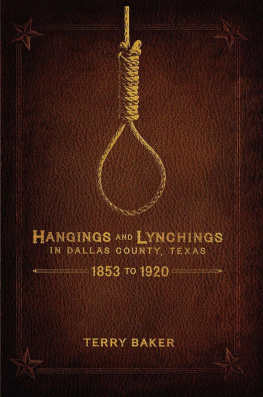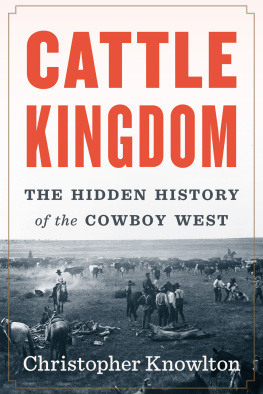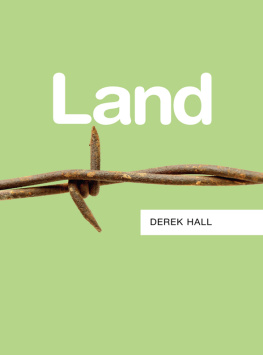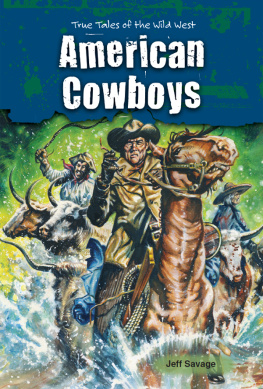PRAISE FOR THE BAD LANDS
The Ox-Bow Incident, Shane, The Big Sky, Warlock... Oakley Halls The Bad Lands belongs with this select group. It is the story of those who came west... to a range where a mans unfenced cattle could roam freely. And wherever they ranged, they would be on his land.
Los Angeles Times
An elegiac, incandescent 1880s Dakota badlands Western that bears comparison to the greats (Shane, The Ox-Bow Incident)... The clearest call yet from the sensitive, slicing voice that rang through the west in Warlock.
Kirkus Reviews
A suspenseful, passionate tale of men, land, love and greed in the Old West.
Publishers Weekly
Long on plot and action, The Bad Lands is a solid, satisfying story. An entertainment... as full of motion and as picturesque as a Remington bronze.
Chicago Tribune Book World
Readers unable to suppress an unfashionable yearning for a good story will be delighted with The Bad Lands.... The cast of whores, gun-hands, buffalo hunters and grizzled settlers is effectively put into play. The story of the Johnson County Cattle War contains genuinely tragic elements.... It would be hard to write a really bad book about it. Mr. Hall has thrust his imagination into that time.
Larry McMurtry, The New York Times Book Review
PRAISE FOR OAKLEY HALL
We are a nation that can, many of us, toss with all aplomb our candy wrapper into the Grand Canyon itself, snap a color shot and drive away; and we need voices like Oakley Halls to remind us how far that piece of paper, still fluttering brightly behind us, has to fall.
Thomas Pynchon
Like Henry James and Mark Twain, Oakley Hall is a master craftsman of the story.
Amy Tan
Separations is nothing less than a story of American conquest matched against unique American innocence. It is a large, imposing and rich book, fitted perfectly to its vision of our history. As I read it, I didnt want it to end.
Richard Ford
Oakley Hall is one of the countrys finest writers. In Separations, he has given us a beautifully written, authentic and colorful evocation of the American West. His story of river exploration and commercial intrigue in the late nineteenth century speaks directly to our twentieth century environmental concerns.
Robert Stone
Hall has written a rollicking adventure novel that is... an eloquent ode to the sublime landscape of the American West.
San Francisco Chronicle
All kinds of fascinating lore about the Old West... Solid characters in a gritty, believable world.
The Washington Post Book World
My gratitude to Herman Gollob, whose idea this novel was, and whose enthusiasm and counsel sustained the long task of writing. My apologies to Theodore Roosevelt and the Marquis de Mors, of the historical Badlands.
THE AUTHOR
THE BAD LANDS
OAKLEY HALL
The University of Chicago Press
Chicago and London
This one for my daughter
BRETT
The University of Chicago Press, Chicago 60637
The University of Chicago Press, Ltd., London
1978 by Oakley Hall
All rights reserved. Published 1978.
University of Chicago Edition 2016
Printed in the United States of America
25 24 23 22 21 20 19 18 17 16 1 2 3 4 5
ISBN-13: 978-0-226-41261-0 (paper)
ISBN-13: 978-0-226-41275-7 (e-book)
DOI: 10.728/chicago/9780226412757.001.0001
Library of Congress Cataloging-in-Publication Data
Names: Hall, Oakley M., author.
Title: The bad lands : a novel / by Oakley Hall.
Description: Chicago ; London : The University of Chicago Press, 2016.
Identifers: LCCN 2016007479 | ISBN 9780226412610 (pbk. : alk. paper) | ISBN 9780226412757 (e-book)
Classifcation: LCC PS3558.A73 B33 2015 | DDC 813/.54dc23 LC record available at http://lccn.loc.gov/2016007479
 This paper meets the requirements of ANSI/NISO Z39.48-1992 (Permanence of Paper).
This paper meets the requirements of ANSI/NISO Z39.48-1992 (Permanence of Paper).
PROLOGUE
Andrew Livingstons father had likened the various lives a man leads to railroads. One must make some sort of running arrangement on every railroad, his father had said.
Andrew had made many such arrangements in his life, as a pianist, a banker, an artist, a rancher, and a politician. Ultimately his only continuing arrangements had been with politics, that profession of which its practitioners were at once so proud and so defensive. Like a good many of his colleagues in the Senate, he would not have traded his membership in the nations most exclusive club for the even more exclusive occupancy of the large, white house visible down H street.
If you are to stop but five minutes for refreshment at the art station, you must have those five minutes clear, his father had said. He could not often find more than five minutes to stop at the art station anymore, but he did make it a point to keep the minutes clear when he looked at the drawings he loved: the Raphael red chalk, the Hogarth in blue and red, the sweet little Veronese that was his wifes favorite, the Watteau sketch of the barefoot girl asleep on the couch, and the Blake color monotype of Nebuchadnezzar in his madness, on hands and knees with tormented face. In his study he would also consider two of his own paintings: a Bad Lands vista of bottomland sloping to the river half concealed behind cottonwoods, with grazing cattle; and a friendly pronghorn, Rufus by name, head attentively turned toward his limner.
In those few minutes he would also go out onto the little enclosed porch that served as his studio. On the easel stood his last painting, which he knew he would never finish, although still from time to time he would take up brush and palette and bend to it, perhaps only to tone down the yellow slant of sun he had inserted in a previous effort to lighten the somberness of the mood. Although he could not say why the depiction of a mans death should not be somber.
The bed in the painting had a scrolled brass foot that caught a little light from the window, which was draped in heavy folds of dark red. The figure filled the bed, a big man in a white shirt. In actuality that white fabric had been bandages, but he had chosen to show it as an open-throated, Byronic shirt. The mans arms lay at his sides. His head was thrown back on the pillow so that his features could not be seen. The throat was muscular. Beside the bed a woman was seated in the patient aspect of grief, all in black with thick black hair shaped like a cowl, and the pale triangle of her face driving down toward the torso of the dying man with a dynamic force that fascinated and repelled the artist. The colors were chunky blotches: the religious and unrelieved black of the womans costume; the gray wall behind her; the whites of the bed and the mans shirt; the dark red of the draperies. Amid all this the scrollwork of the bed end appeared merry, almost frivolous; and, although this was not right, neither was it entirely wrong.
As the years passed and the porch reverberated to the sound of passing automobiles rather than the clipping of hoofs and the scrape of carriage wheels, that painted scene continued to challenge and entreat him. Behind it in his memory loomed yet another image, one he had never been able to bring himself even to sketchthe hanged boy like a limp question mark, with attendant figures in perfect formal arrangement. And behind that still other potent transparencies, like a parade of ghosts invoking the violence and the poetry, the bad acts and the good, the questions posed and wrongs pleaded, that, he knew now, he would not live to see answered or righted
Next page








 This paper meets the requirements of ANSI/NISO Z39.48-1992 (Permanence of Paper).
This paper meets the requirements of ANSI/NISO Z39.48-1992 (Permanence of Paper).